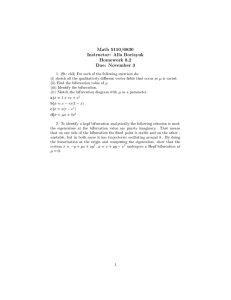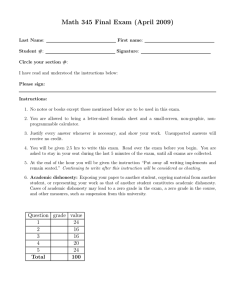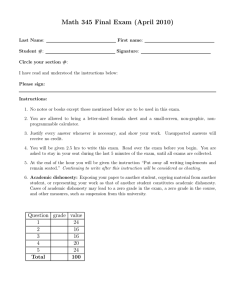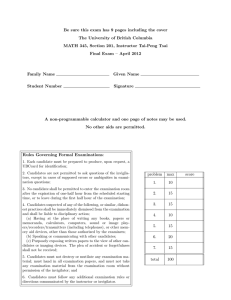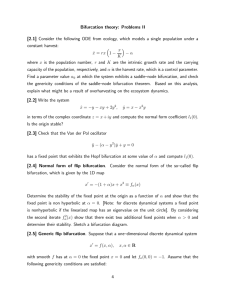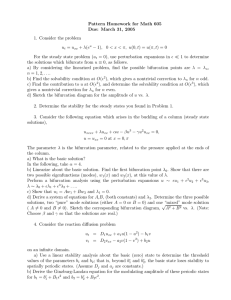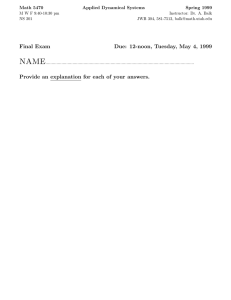4 Problem Set 4 — Bifurcations
advertisement
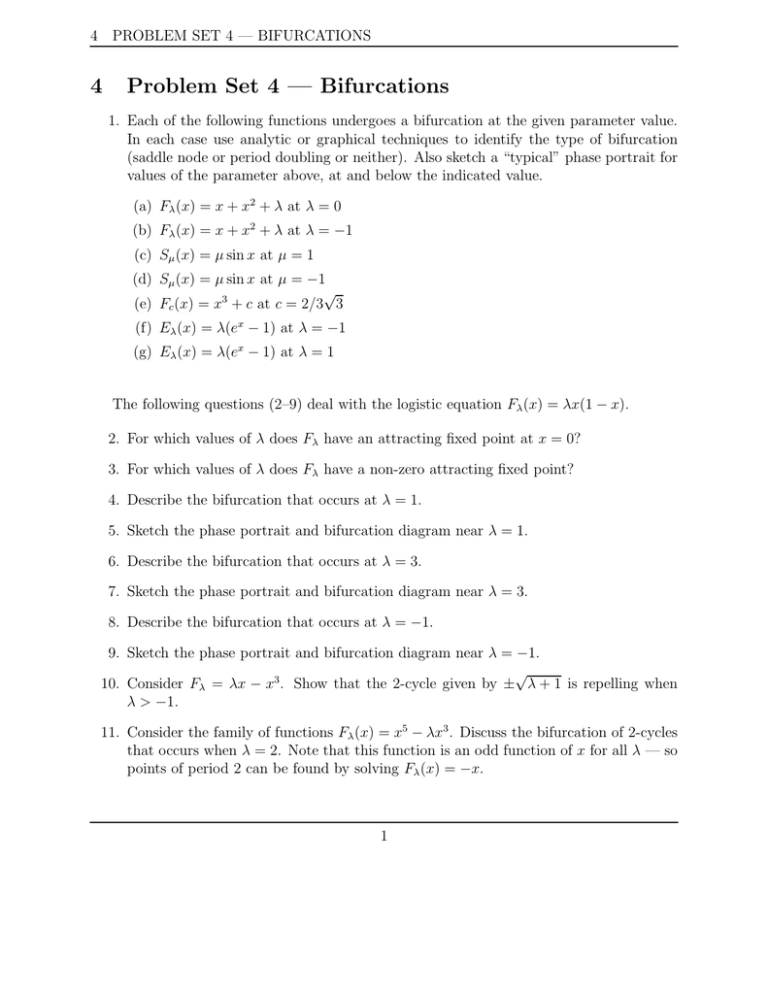
4 PROBLEM SET 4 — BIFURCATIONS 4 Problem Set 4 — Bifurcations 1. Each of the following functions undergoes a bifurcation at the given parameter value. In each case use analytic or graphical techniques to identify the type of bifurcation (saddle node or period doubling or neither). Also sketch a “typical” phase portrait for values of the parameter above, at and below the indicated value. (a) Fλ (x) = x + x2 + λ at λ = 0 (b) Fλ (x) = x + x2 + λ at λ = −1 (c) Sµ (x) = µ sin x at µ = 1 (d) Sµ (x) = µ sin x at µ = −1 √ (e) Fc (x) = x3 + c at c = 2/3 3 (f) Eλ (x) = λ(ex − 1) at λ = −1 (g) Eλ (x) = λ(ex − 1) at λ = 1 The following questions (2–9) deal with the logistic equation Fλ (x) = λx(1 − x). 2. For which values of λ does Fλ have an attracting fixed point at x = 0? 3. For which values of λ does Fλ have a non-zero attracting fixed point? 4. Describe the bifurcation that occurs at λ = 1. 5. Sketch the phase portrait and bifurcation diagram near λ = 1. 6. Describe the bifurcation that occurs at λ = 3. 7. Sketch the phase portrait and bifurcation diagram near λ = 3. 8. Describe the bifurcation that occurs at λ = −1. 9. Sketch the phase portrait and bifurcation diagram near λ = −1. √ 10. Consider Fλ = λx − x3 . Show that the 2-cycle given by ± λ + 1 is repelling when λ > −1. 11. Consider the family of functions Fλ (x) = x5 − λx3 . Discuss the bifurcation of 2-cycles that occurs when λ = 2. Note that this function is an odd function of x for all λ — so points of period 2 can be found by solving Fλ (x) = −x. 1

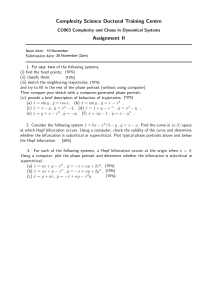

![Bifurcation theory: Problems I [1.1] Prove that the system ˙x = −x](http://s2.studylib.net/store/data/012116697_1-385958dc0fe8184114bd594c3618e6f4-300x300.png)
